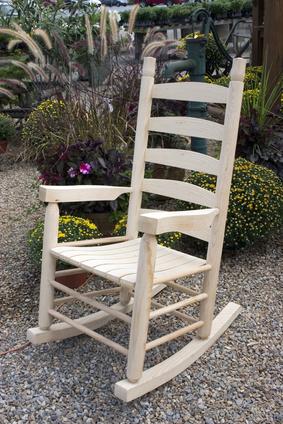A few hours and a pint or two of paint can transform a humdrum piece of furniture into a conversation piece or family heirloom. Hand-painting furniture for your baby’s nursery, your living room, your patio or kitchen not only guarantees you an original piece of furniture, it provides you with the satisfaction that “decorator” pieces from the store will never be able to match.
What to Paint
With the right paint, you can decorate almost any kind of furniture. Give an old metal aquarium stand a coat of glossy black paint, top it with a painted plywood square and–voila–instant side table. Paint the rungs on a pair of old kitchen chairs bright red and match them with an old end table on which you’ve stenciled a checkerboard. Personalize an unfinished child-size rocking chair with your child’s name and a garland of stenciled flowers, or detail headboard posts with hand-painted animal prints.
Styles
From the glossy, lacquered finishes that suit Asian-themed contemporary styles to the trompe-l’oeil masterpieces that decorate Victorian furniture, hand-painted chairs, tables, dressers and chests fit into any decor. Many styles and techniques require nothing more than patience and a steady hand to create striking decorator pieces. Some popular techniques include painting dresser drawers in colors that contrast with the frame, masking off stripes and squares to create patterned tabletops, and detailing chair rungs with colors that match the seat and back.
Tools
Chances are you have all the tools you need for a hand-painted furniture project just hanging around your house. The handiest tools include a 4-inch paintbrush for painting large, flat surfaces, such as tabletops, and a 1-inch paintbrush for smaller areas, such as chair slats and table legs. Raid your kids’ art supplies or the arts-and-crafts aisle of your local store for detailing paintbrushes and stencil brushes. For faux and textured paint finishes, try plastic wrap, clean rags, loofah sponges and other items that have interesting or unusual surface textures. Don’t forget your kitchen cabinets–just imagine what you can do with a potato masher.
Process
A clean surface and smooth base coat are the secrets to a successful, long-lasting finish, according to Elise Kinkead, author of “50 Ways to Paint Furniture.” Whether you start with an unfinished piece or a yard sale find, start by cleaning the surface to remove any grease or dirt that will mar your finished surface. Go over wood surfaces with fine sandpaper, then wipe down with a tack cloth to remove remaining surface dust. In most cases, allow paint to dry completely between coats, and finish off your project with a protective top coat of acrylic.
Details
Little details make a big impact. Carefully outlining the edges of a tabletop with a thin line of glossy apple-green paint can turn a cookie-cutter kitchen table into a one-of-a-kind furniture accent. Customize big-box store bargain furniture with judicious touches of color taken from your overall color scheme.
Expert Insight
Sometimes, painting is easier if you disassemble first. Removing an upholstered seat from a chair frame, for instance, means you can concentrate on design rather than keeping the paint off the fabric. For the same reason, remove drawer pulls or cabinet handles instead of trying to paint around them.
Photo Credit
- rocking chair image by Photoeyes from Fotolia.com





